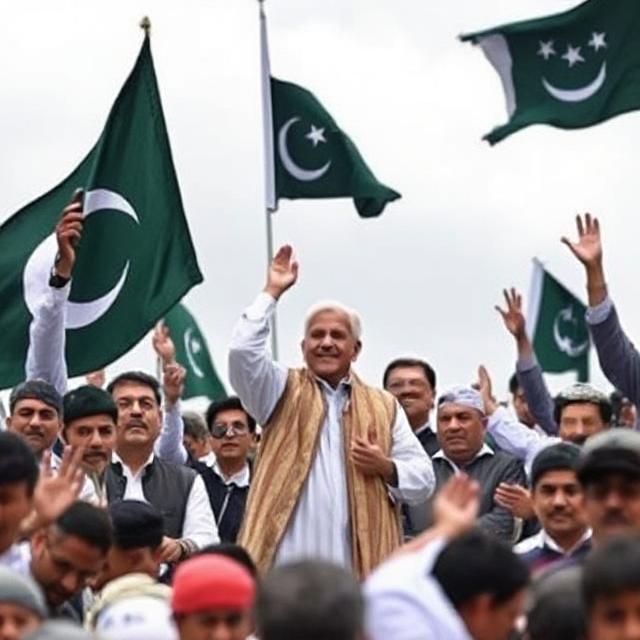Pakistan’s Economic Crossroads: Challenges and Opportunities Ahead
By Sana KhalilPublished On 25 Sep 2025
Islamabad, September 2025 Pakistan faces one of its most pivotal economic moments in recent memory. With rising inflation, global pressures, and domestic discontent, the country stands at a crossroads. The decisions made over the next year could determine whether Pakistan regains stability and growth or drifts deeper into crisis. In this article, we explore the current economic landscape, the obstacles, and the potential paths forward.
Inflation and Cost of Living: The Immediate Pressure
For most Pakistani households, inflation isn’t an abstract statistic it’s felt daily. Food, fuel, utilities all are rising faster than wages. Families on tight budgets are being squeezed harder. When simple goods like flour, cooking oil, or electricity see jump after jump, living becomes tougher.
The government has attempted to cushion the blow with subsidies and relief packages. Yet, these are often patchwork solutions. In many cases, subsidies benefit urban centers more than rural areas, leaving hinterlands vulnerable. Further, sustaining such support becomes difficult when national revenue is strained and debt repayments loom.
Debt Burden and External Pressures
Pakistan’s debt obligations are substantial. A significant portion of foreign exchange earnings goes directly to servicing external debt. This constrains fiscal flexibility and limits how much the government can spend on essential public services.
International lending institutions and financial markets are watching closely. Any sign of misstep failure to meet targets, fiscal slippage, or political turmoil can provoke stricter conditions or withholding of support. That dynamic places additional pressure on leadership to avoid policy miscalculations.
The Role of Exports and Remittances
In this setting, exports and remittances become lifelines. Exports generate foreign currency and help with the trade balance. Remittances from Pakistanis abroad directly support tens of millions of households, especially in rural areas.
Yet, Pakistan’s export base is narrow, with textiles dominating. Expanding to value-added goods, diversifying markets, fostering technology exports, and improving industrial productivity remain daunting goals. Remittances are subject to exchange rate shifts and global economic trends beyond Pakistan’s control.
Energy Crisis: A Persistent Drag
Energy remains a chronic bottleneck. Frequent load shedding, high tariffs, and losses in distribution systems weigh heavily on both households and industry. Investors hesitate when electrical reliability is dubious; businesses struggle when power cuts interrupt production.
Recent announcements promise investment in renewable energy, improved grid management, and reforms in the power sector. But these plans must be paired with strong implementation and governance to avoid becoming yet another unfulfilled promise.
Governance, Corruption, and Institutional Weaknesses
Much of Pakistan’s economic fragility traces back to institutional issues. Weak tax collection, opaque decision-making, and irregular oversight allow leaks and inefficiency. Corruption, whether petty or grand, erodes public trust and wastes precious resources.
Reform in these areas is politically painful. It often pits entrenched interests against change. Yet, without stronger institutions, many public policies falter. The success of any economic recovery hinges on whether structural reforms take root, not just whether new programs are announced.
Social Implications and Public Discontent
Economics is rarely just numbers. Behind the statistics lie real people struggling to make ends meet. Rising prices, job insecurity, and uncertainty breed dissatisfaction. This, in turn, can become political volatility.
In recent weeks, protests and consumer complaints have become more frequent. In cities, long queues at petrol stations, electricity breakdowns, or delays in essential supplies spark wide discussion on social media. The mood is not one of blind optimism; many citizens demand results, not promises.
Possible Paths Forward
While the challenges are steep, Pakistan is not without options. Here are some plausible strategies that could steer things toward stability:
- Prioritize growth sectors: Encouraging sectors with high export potential (such as information technology, agro-processing, and green energy) can help diversify income sources.
- Fiscal discipline with smart spending: Rather than blanket subsidies, targeted cash transfers or social safety nets could relieve pressure on vulnerable populations more efficiently.
- Debt management & renegotiation: Restructuring or extending terms where possible would reduce near-term fiscal strain.
- Institutional reform: Strengthening audit systems, tax agencies, and transparent procurement can reduce waste and corruption.
- Energy sector overhaul: Modernizing plants, promoting renewables, and addressing losses in distribution can improve reliability and boost investor confidence.
- Inclusive development: Ensuring rural and peripheral regions aren’t ignored will reduce the sense of marginalization and spread growth more evenly.
Why This Matters for 9NewsHD’s Audience
Your viewers and readers whether in Islamabad, Karachi, Lahore, or smaller towns are living through these changes. The decisions taken now will affect their electricity bills, food basket, job prospects, and quality of life. At 9NewsHD, we aim to bring clarity on these developments, linking policy to real experiences and consequences.
By bringing in grassroots voices, expert analysis, regional snapshots, and data interpretation, 9NewsHD helps people understand not just that things are changing but how and why. You can see more coverage, live updates, and deeper dives at the official site: 9NewsHD.tv.
Conclusion: A Moment of Challenge, But Also Opportunity
Pakistan’s economic road ahead is steep and strewn with hurdles. Yet, these challenges also open doors for transformation. With disciplined policy, strong institutions, and an inclusive focus, Pakistan can reorient toward stability and growth.
But the window is narrow. Missteps, delays, or half-hearted reforms will be costly not just economically, but socially and politically. Citizens, analysts, and leaders alike must stay alert. The next few quarters may well determine whether Pakistan reclaims its momentum or slips further into crisis.
Stay connected. Stay informed. 9NewsHD will continue bringing you the most relevant, verified developments as this critical journey unfolds.


